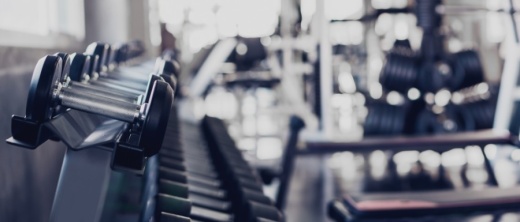With the second phase of Gov. Greg Abbott’s reopening in effect, the future is still uncertain for Bay Area businesses.
Fitness facilities across the state have been permitted to reopen this week as part of the second phase. Fillipe Silvas, owner of OTG Fitness in Webster, said the gym, which caters to clients interested in personal training, was in a soft-open period for two weeks prior to the May 18 reopen.
New clients began joining even during the soft open, and new and returning gym-goers alike are eager to resume their in-person training, he said.
“They want a sense of normalcy,” he said. “Our clients have really been asking to come back in.”
OTG Fitness is implementing some changes, Silva said, including the frequent cleaning of workout equipment and manual scheduling—clients have to set up appointments directly via text or call, so staff can ensure the facility stays at the required reduced capacity. The use of face masks is optional.
"If anything, it’s kind of dangerous to exercise with masks on," he said.
Silva hopes Bay Area residents will be more cognizant of the benefits of regular exercise as a result of the coronavirus.
“I hope that health and fitness has become more prevalent in people's minds,” he said.
However, Silva and other gym owners are still fighting an uphill battle. Since fitness facilities had to close their doors for a longer period of time than many other businesses, independent gyms and gym owners will likely be hit the hardest post-pandemic, said Brittany Green, who is a partner at Advantage Business Coaching in League City. Green and her parents offer small-business owners various success and growth tools.
Since late April, Green said she has noticed various psychological changes among her clients as they deal with the effects of COVID-19 on their businesses. Some clients have stopped their coaching, while others are essentially remaining on scholarship to continue receiving services. Some of Green’s clients have reopened their businesses, while others have not after not receiving relief aid.
Overall, her business has seen “a bombardment of small-business owners” interested in marketing assistance, she said.
“They know they’ve got to make a move because if they don’t they’re not going to survive,” she added.
Even for gym owners or other business owners aiming to sell their storefronts, Green encouraged reopening and spending 90 days improving operations before putting the business on the market in order to sell at a premium price. Customers are more conscious of supporting local businesses than they were prior to the pandemic, which will likely help owners make up profits, and this consumer trend is expected to continue for the next six months to a year, she said.
Her family’s business-coaching service aims to help owners keep their dreams alive, Green added.
“We want to be able to help as many business owners as we can make it to the other side of this,” she said.





